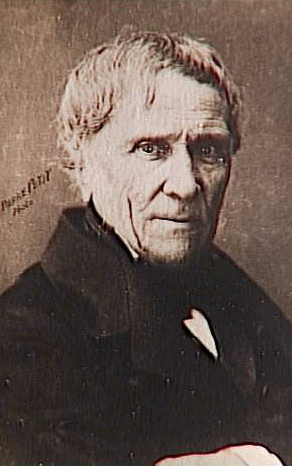Antoine César Becquerel (nonfiction): Difference between revisions
(Created page with "'''Antoine César Becquerel''' (March 7, 1788 – January 18, 1878) was a French scientist and a pioneer in the study of electric and luminescent phenomena. He was...") |
No edit summary |
||
| Line 1: | Line 1: | ||
'''Antoine César Becquerel''' (March 7, 1788 – January 18, 1878) was a French scientist and a pioneer in the study of electric and [[Light|luminescent]] phenomena. | [[File:Antoine_Becquerel.jpg|thumb|Antoine César Becquerel.]]'''Antoine César Becquerel''' (March 7, 1788 – January 18, 1878) was a French scientist and a pioneer in the study of electric and [[Light|luminescent]] phenomena. | ||
He was born at Châtillon-sur-Loing (today Châtillon-Coligny). After passing through the École polytechnique he became engineer-officer in 1808, and saw active service with the imperial troops in Spain from 1810 to 1812, and again in France in 1814. He then resigned from the army and devoted the rest of his life to scientific investigation. | He was born at Châtillon-sur-Loing (today Châtillon-Coligny). After passing through the École polytechnique he became engineer-officer in 1808, and saw active service with the imperial troops in Spain from 1810 to 1812, and again in France in 1814. He then resigned from the army and devoted the rest of his life to scientific investigation. | ||
Revision as of 15:42, 17 December 2016
Antoine César Becquerel (March 7, 1788 – January 18, 1878) was a French scientist and a pioneer in the study of electric and luminescent phenomena.
He was born at Châtillon-sur-Loing (today Châtillon-Coligny). After passing through the École polytechnique he became engineer-officer in 1808, and saw active service with the imperial troops in Spain from 1810 to 1812, and again in France in 1814. He then resigned from the army and devoted the rest of his life to scientific investigation.
In 1820, following the work of René Just Haüy, he found that pressure can induce electricity in every material, attributing the effect to surface interactions (this is not piezoelectricity). In 1825 he invented a differential galvanometer for the accurate measurement of electrical resistance. In 1829 he invented a constant-current electrochemical cell, the forerunner of the Daniell cell. In 1839, working with his son A. E. Becquerel, he discovered the photovoltaic effect on an electrode immersed in a conductive liquid.
He was the father of the physicist A. E. Becquerel and grandfather of the physicist Henri Becquerel. His name is one of the 72 names inscribed on the Eiffel Tower.
In the News
Fiction cross-reference
Nonfiction cross-reference
External links:
- Antoine César Becquerel @ Wikipedia
